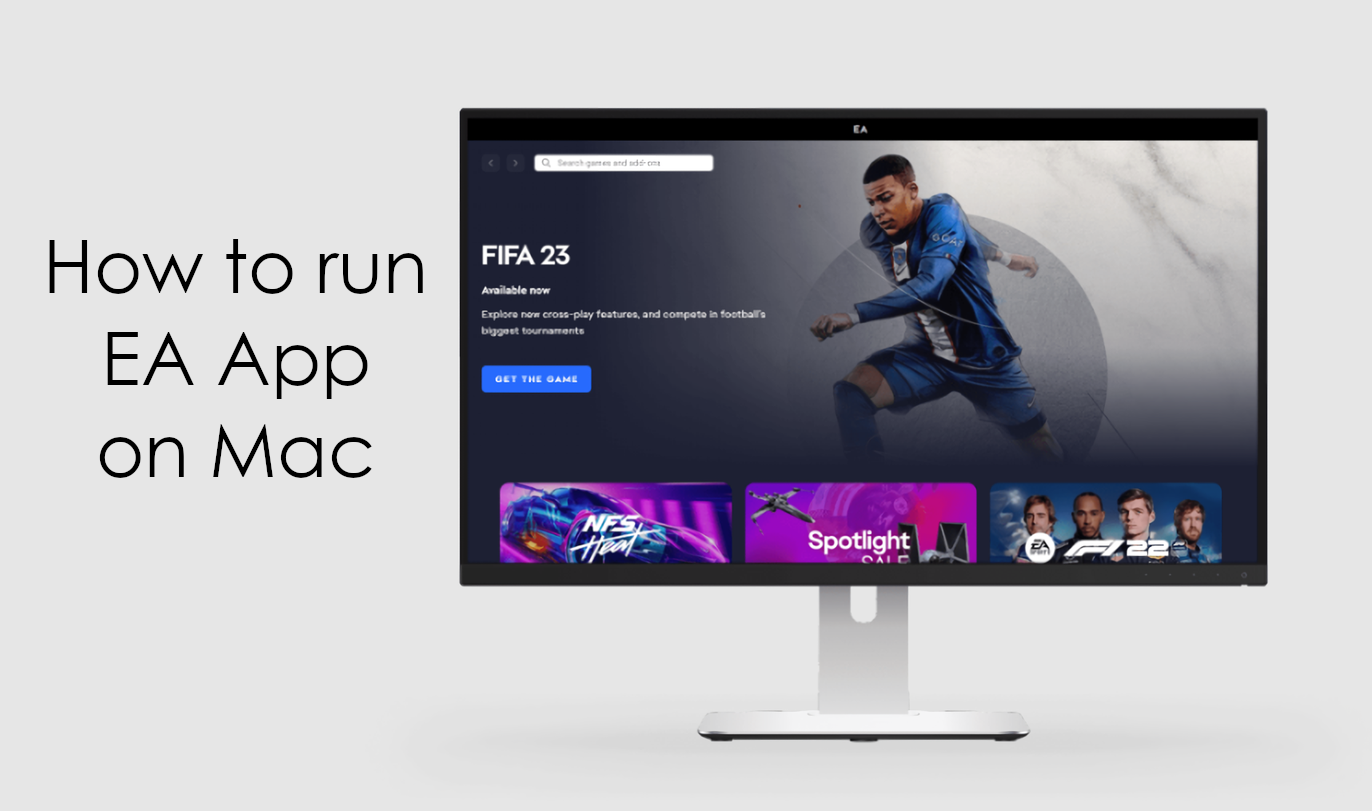Is it possible to run EA App on Mac?
EA App is the official storefront and launcher for all games developed by Electronic Arts. Previously, this job was performed by Origin, which, too, was a store for EA games. However, Origin for Windows is now deprecated, and its users are asked to upgrade to EA App. As Origin and EA App share the library of games and all user data, no one will have to create a new account. Nor will anyone lose the purchases they’ve already made. EA App is simply an upgrade over Origin, a new version of the store if you will. It features a new streamlined user interface and various other improvements. Origin users on Mac, however, will not be prompted to upgrade to EA App, because it is not officially available on the platform. As all purchases are shared between the two apps, upgrading is not necessary, either. But what if you wanted to run EA App on Mac? We are happy to inform you that this is possible; read the guide below to learn how to do it.
Run EA App on Mac using Parallels

One easy way to run EA App on Mac is by using a program called Parallels Desktop. This program is capable of creating and running virtual machines that run Windows and support hardware acceleration. In simpler terms, Parallels Desktop allows you to install Windows 10 on Mac with just a couple of clicks and switch between MacOS and Windows instantly. So you will be able to run Windows, install EA App, and enjoy many EA games on Mac (including Windows exclusives) just like on a regular PC. Generally speaking, you will need an iMac Pro or a Mac Pro to run demanding games. Some MacBook Pro and iMac models are also suitable; they must have an Intel processor, a discrete graphics card and at least 16 GB of RAM. If your Mac has an Apple Silicon chip (such as M1, M2, M3), you may experience issues playing modern games. However, if the game you’re trying to run is old, or simply doesn’t demand much from computer hardware, then you will likely be able to run it on any Mac computer, including MacBook Air.
Please note that not all games are supported by Parallels. Several conditions must be met for the game to be playable. Your Mac must exceed minimum system requirements for the game. Playing a game on Windows running through Parallels places additional strain on your Mac, so meeting them is not enough. Games that require DirectX 12 are currently not supported by Parallels. AppsOnMac recommends using Parallels’ free trial feature to determine whether you can run the game or not if you’re uncertain.
Run EA App on Mac using other virtual machines
Another popular virtualization program is VMware Fusion. It, too, allows running Windows virtual machines. Fusion’s current versions provide hardware-accelerated DirectX 11 and OpenGL 4.1 capabilities to virtual machines, which allows them to run heavy, GPU-intensive applications and games with top 3D graphics.
You can also try VirtualBox, Wine, and QEMU, however, these solutions are not user-oriented and may require advanced computer skills.
Run EA App on Mac using BootCamp
Note: Mac computers with new Apple Silicon (M1, M2, M3 Pro, or M1, M2, M3 Max) currently do not support BootCamp. In this case, please, use the options above to run Kerbal Space Program 2 on Mac
This method is simple but time-consuming. If your Mac meets all the system requirements above, you can run EA App on Mac by installing Windows. You need to set up a dual boot of Windows and Mac via BootCamp. This is an application that allows users to choose the system to work in on startup, however, you won’t be able to switch between systems like in Parallels. You will need to reboot your machine every time you want to switch from Mac to Windows and vice versa. Remember that Mac is just a computer, in the end. And while newer Macs have their own special Apple Silicon chips that cannot run Windows, older Macs are very much similar to computers that run Windows, they have Intel processors, compatible RAM, disks, and other components. So you can install Windows on an older Mac by allocating no less than 64 GB of disk space (to be able to run Windows and a couple of games) and following these steps:
For MacOS versions prior to OS X El Capitan 10.11 you will need to create a bootable Windows USB.
- Download this Windows ISO file.
- Open Boot Camp Assistant (Go to Applications > Utilities).
- Define the Windows partition size and choose the Windows ISO file you’ve downloaded.
- Format the Windows partition and go through all Windows installation steps.
- When Windows boots for the first time follow on-screen instructions to install Boot Camp and Windows support software (drivers)






